
How to Use Servo: Examples, Pinouts, and Specs
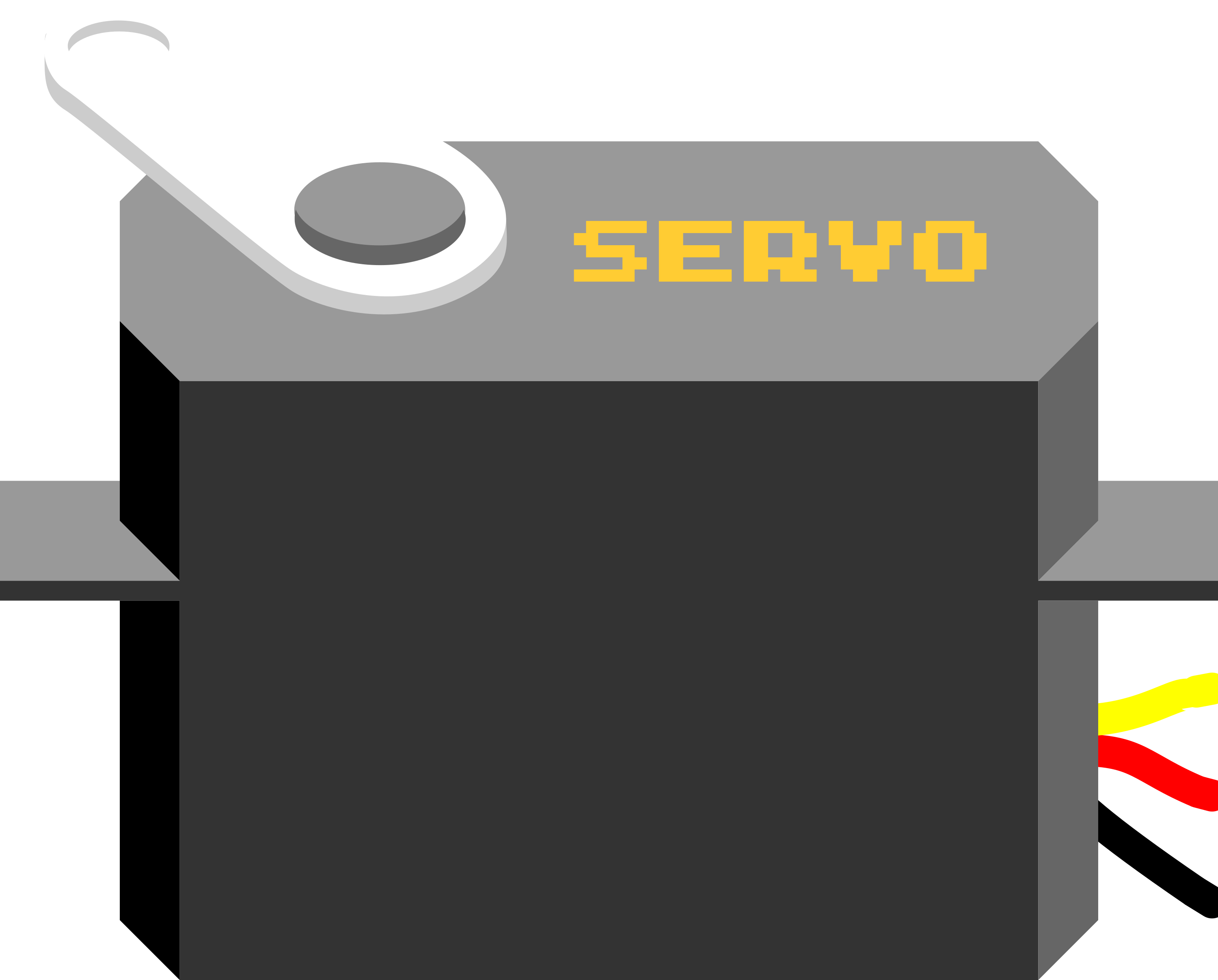
 Design with Servo in Cirkit Designer
Design with Servo in Cirkit DesignerIntroduction
A servo is a rotary actuator that allows for precise control of angular position, velocity, and acceleration. It consists of a motor coupled to a sensor for position feedback, along with a control circuit. Servos are widely used in robotics, automation, remote-controlled vehicles, and industrial machinery due to their ability to provide accurate and repeatable motion.
Explore Projects Built with Servo
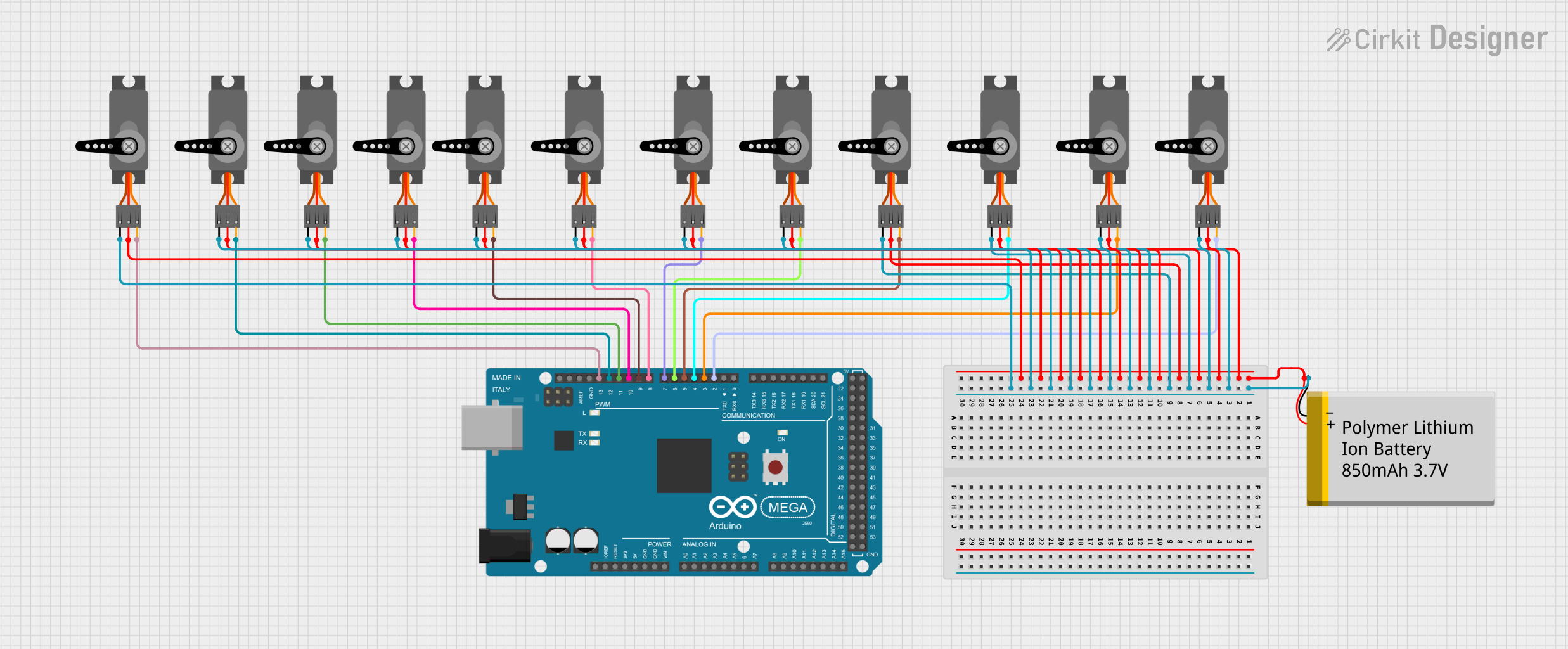
 Open Project in Cirkit Designer
Open Project in Cirkit Designer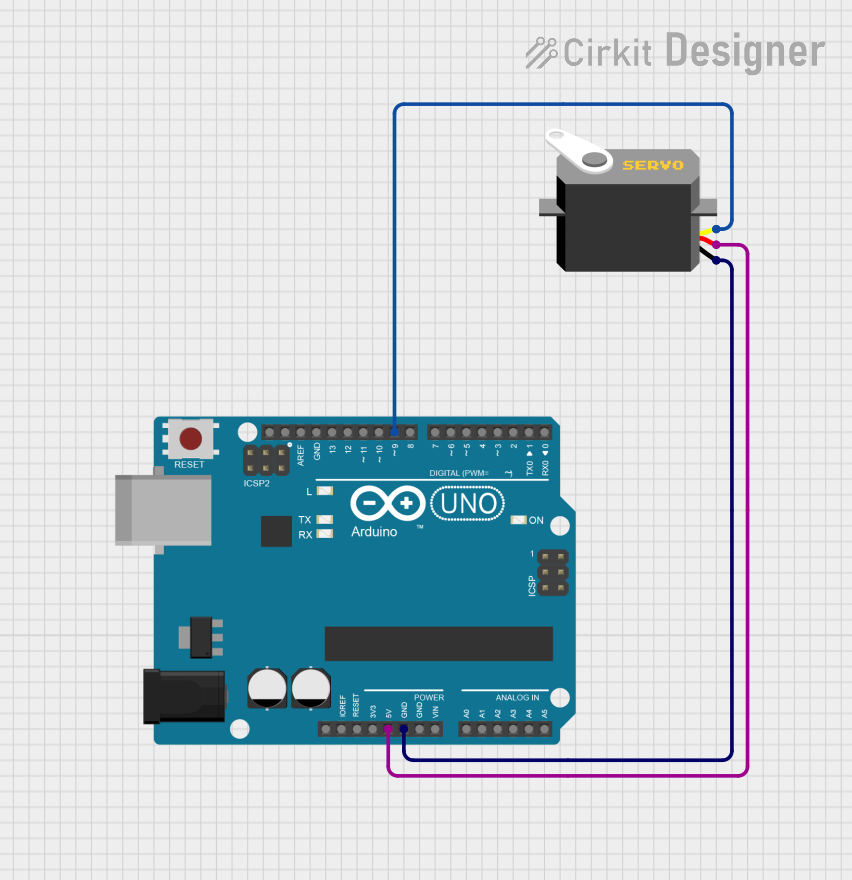
 Open Project in Cirkit Designer
Open Project in Cirkit Designer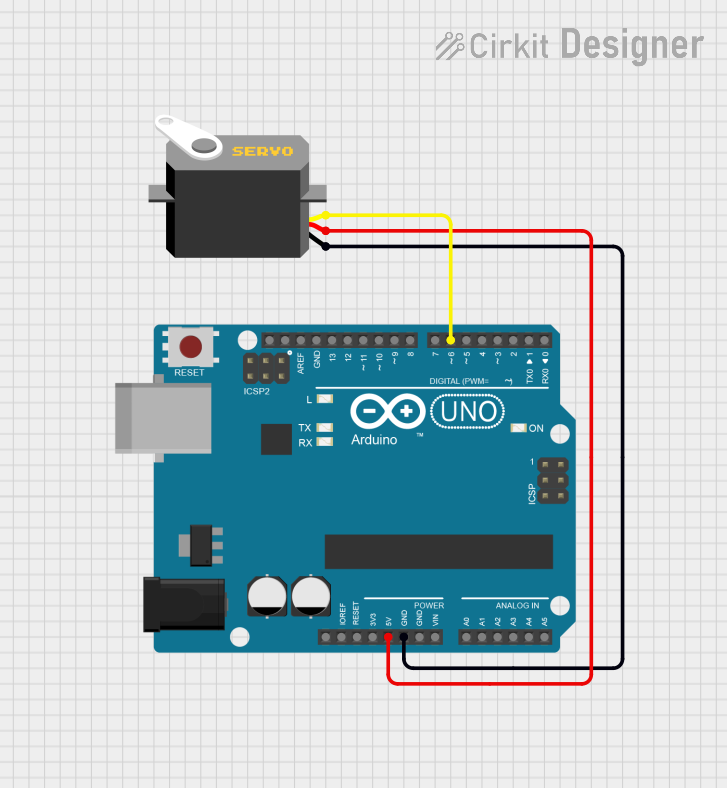
 Open Project in Cirkit Designer
Open Project in Cirkit Designer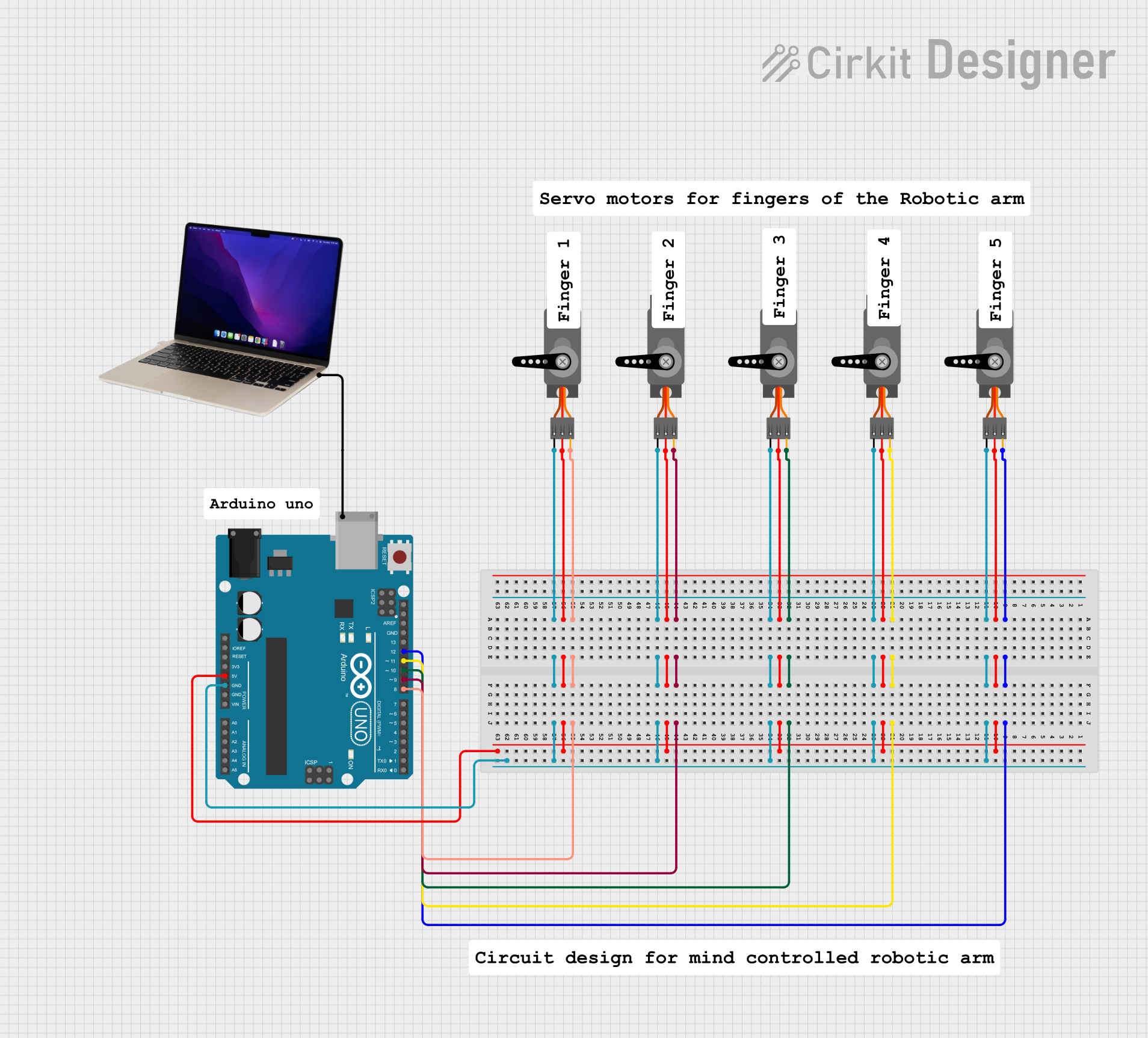
 Open Project in Cirkit Designer
Open Project in Cirkit DesignerExplore Projects Built with Servo

 Open Project in Cirkit Designer
Open Project in Cirkit Designer
 Open Project in Cirkit Designer
Open Project in Cirkit Designer
 Open Project in Cirkit Designer
Open Project in Cirkit Designer
 Open Project in Cirkit Designer
Open Project in Cirkit DesignerCommon Applications and Use Cases
- Robotics: Controlling robotic arms, grippers, and joints.
- RC Vehicles: Steering and throttle control in remote-controlled cars, boats, and planes.
- Automation: Positioning systems in conveyor belts and manufacturing equipment.
- DIY Projects: Automated doors, camera gimbals, and hobbyist creations.
- Prosthetics: Actuating artificial limbs for precise movement.
Technical Specifications
Below are the general technical specifications for a standard hobby servo. Note that specifications may vary depending on the specific model and manufacturer.
Key Technical Details
- Operating Voltage: 4.8V to 6V (typical range)
- Current Draw: 10mA to 1A (depending on load)
- Torque: 1.5 kg-cm to 25 kg-cm (varies by model)
- Rotation Range: 0° to 180° (standard), 360° for continuous rotation servos
- Control Signal: Pulse Width Modulation (PWM)
- Pulse width: 1ms (0°), 1.5ms (90°), 2ms (180°)
- Frequency: 50Hz (20ms period)
- Connector: 3-pin (Signal, VCC, GND)
Pin Configuration and Descriptions
The servo typically has a 3-pin connector with the following pinout:
| Pin Number | Name | Description |
|---|---|---|
| 1 | Signal | Receives the PWM control signal |
| 2 | VCC | Power supply (4.8V to 6V) |
| 3 | GND | Ground connection |
Usage Instructions
How to Use the Servo in a Circuit
Connect the Servo:
- Connect the Signal pin to a PWM-capable pin on your microcontroller (e.g., Arduino).
- Connect the VCC pin to a 5V power source.
- Connect the GND pin to the ground of your circuit.
Generate PWM Signal:
- Use a microcontroller to generate a PWM signal with a frequency of 50Hz.
- Adjust the pulse width to control the servo's position:
- 1ms pulse: 0° position
- 1.5ms pulse: 90° position
- 2ms pulse: 180° position
Power Considerations:
- If the servo draws high current, use an external power supply instead of powering it directly from the microcontroller.
Arduino Example Code
Below is an example of how to control a servo using an Arduino UNO:
#include <Servo.h> // Include the Servo library
Servo myServo; // Create a Servo object
void setup() {
myServo.attach(9); // Attach the servo to pin 9
}
void loop() {
myServo.write(0); // Move servo to 0 degrees
delay(1000); // Wait for 1 second
myServo.write(90); // Move servo to 90 degrees
delay(1000); // Wait for 1 second
myServo.write(180); // Move servo to 180 degrees
delay(1000); // Wait for 1 second
}
Important Considerations and Best Practices
- Avoid Overloading: Do not exceed the torque rating of the servo to prevent damage.
- Use Proper Power Supply: Ensure the power supply can handle the servo's current draw, especially under load.
- Secure Mounting: Mount the servo securely to avoid vibrations or misalignment.
- Calibrate the Servo: If the servo does not reach the desired position, adjust the pulse width or use a calibration routine.
Troubleshooting and FAQs
Common Issues and Solutions
Servo Not Moving:
- Cause: Incorrect wiring or insufficient power supply.
- Solution: Double-check the connections and ensure the power supply meets the servo's requirements.
Servo Jittering:
- Cause: Electrical noise or unstable power supply.
- Solution: Add a capacitor (e.g., 100µF) across the power supply to stabilize it.
Servo Overheating:
- Cause: Prolonged operation under high load.
- Solution: Reduce the load or use a servo with a higher torque rating.
Servo Not Reaching Full Range:
- Cause: Incorrect PWM signal or mechanical obstruction.
- Solution: Verify the PWM signal timing and check for physical obstructions.
FAQs
Q: Can I control multiple servos with one microcontroller?
- A: Yes, most microcontrollers can control multiple servos using separate PWM pins or a servo driver module.
Q: What is the difference between a standard and a continuous rotation servo?
- A: A standard servo has a limited rotation range (e.g., 0° to 180°), while a continuous rotation servo can rotate 360° and is controlled by speed and direction rather than position.
Q: Can I power the servo directly from the Arduino?
- A: It is not recommended for high-torque servos, as they may draw more current than the Arduino can supply. Use an external power source instead.
Q: How do I know if my servo is compatible with my project?
- A: Check the servo's voltage, torque, and size specifications to ensure they meet your project's requirements.